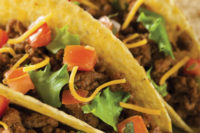Prior to 1970’s, there was little research on food, culture, behaviors, which addressed Hispanics in America or the socio-demographic factors affecting their health. Three decades later, there is a surge of interest in Hispanics and their health, as a result of dramatic growth in the Hispanic population.
For a variety of reasons, Hispanics aren’t always obtaining adequate early or comprehensive health education. Thus, they can be at a greater-than-average risk for serious health problems. Today, not only healthcare professionals are expected to encourage and facilitate positive behavioral changes in Hispanic consumers, but there is a tremendous amount of information within the food industry to educate consumers about healthy food and better-for-you products.
Ethnic factors strongly influence a person’s overall behavior, so food companies working with Hispanics must understand the food and cultural aspects of the different Hispanic cultures they serve.
Demographic breakdown
The Hispanic population in the United States represents a diverse array of ancestry/culture, socio-economic conditions, and needs. According to the 2010 U.S. Census Bureau population estimate, there are roughly 50.5 million Hispanics living in the United States. This group represents 16% of the total U.S. population. Among these Hispanic subgroups, Mexicans rank as the largest, at 63%. They are followed by: Central and South Americans (13%), Puerto Ricans (9.2%) and Cubans (3.5%). The states with the largest Hispanic populations are California (14 million), Texas (9.5 million), New York (3.4 million), Florida (4.2 million) and Illinois (1.2 million).
Hispanics are a very heterogenous group, despite the fact that they speak the same language and share a number of cultural commonalities. The overwhelming growth of the Hispanic population encouraged me to briefly review their food preferences by country. Below is a breakdown of common Hispanic foods with their English definitions:
Mexico
Bolillo–A small, elongated roll of bread
Biscochitos–Crisp buttery cookies
Calabazitas con jitomate–Zucchini with stewed tomatoes
Caldo de pollo con fideos–Chicken broth with thin noodles
Chicharrón–Crisp-fried pork rind
Chilaquiles–A dish using stale tortillas fried and covered with salsa
Chorizo–Spicy Mexican pork sausage
Gorditas–Thick patties of masa dough and lard
Liquado–A fruit milkshake made with milk
and sugar
Pan Dulce Mexicano–Sweet rolls distinctive
of Mexico
Picadillo–Mixture of ground beef or shredded meat and other ingredients usually used as stuffing
Pozole–Hominy with pork or chicken
Puerto Rico
Annatto or achiote–The red seeds found inside the seed pods of this Caribbean native shrub
Adobo–A basic seasoning combination for Puerto Rican cooking
Arroz con gandules–a medium grain white rice seasoned with sofrito, achiote (cilantro, green peppers, onions, garlic, aji and salt) and green pigeon peas
Asopao de Pollo (red seeds of a native Caribbean shrub)–A comforting chicken stew
Bacalao-Salted codfish
Jugos naturales (tropicales de la isla)–100% tropical fruit juices from tropical islands
Tostones–Sliced green plantain fried, mashed flat and refried
Viandas–Root vegetables
Yautia–Taro root
Salvador
Popusas–Stuffed corn patties (in thick tortillas) with cheese or a savory filling. Grilled until golden brown
Guatemala
Flan de Queso–Cream cheese flan
Colombia
Arepas–Corn and cheese cakes with a crisp crust eaten daily (cooked on a griddle or in the oven)
Arepas de Choclo–Arepas or crispy corn cakes made with fresh corn and brown sugar
Ajiaco con Pollo o Ajiaco Bogotano)–Cream of potato soup with chicken, sour cream and capers
In summary, seek detailed knowledge about the aspects of Hispanic food and culture on the part of a company trying to reach the Hispanic consumer. It’s also important to establish effective communication and attention to the needs of the growing Hispanic population.
Here are some tools for more effective communication:
Identify Nuances: There must be a respect for the culture and family members. Here are a few obstacles:
• Language barrier
•People treated as if all Hispanics are the same
•Ignorance about the geography of their country
Capture the attention of Hispanics:
•Do the research. Learn about the goods and services that cater to Hispanic tastes and preferences in cuisine, music, fashion and lifestyle
•Broaden menu creations to include more than just rice and beans
•Build bonds within a family to gain trust
•Create relevant cultural materials to deliver the message effectively.








